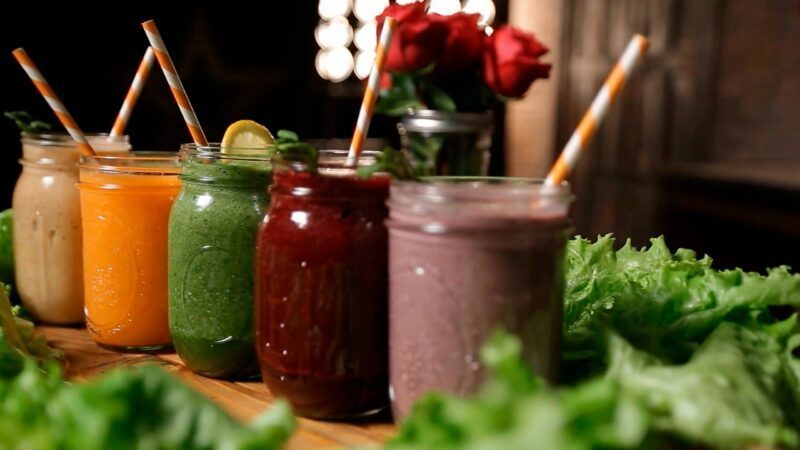
What is a smoothie?
A smoothie is a drink mixed of frozen or fresh fruit and/or vegetables blended to a desired consistency. Anything else can be added to a smoothie to change the flavor or incorporate nutrient-dense foods in a fun and delicious way.
What is a juice?
Essentially a juice is a concentrated version of a smoothie, though often with nothing else added other than fruits and vegetables. Typically, a juice is made by using a juicer and juicing any fruit or vegetable on their own or in combination. Meghan Telpner suggests an inventive way to get around not having a juicer by blending the same fruit or vegetable combinations in a blender then straining them through a fine sieve or nut-milk bag (cheese cloth).1
How does a smoothie differ from a juice?
A smoothie is a thicker, blended drink that is larger in volume and often high in the macronutrients (protein, fats, and carbohydrates) as well as the micronutrients (vitamins and minerals) and enzymes, etc. A big distinction is that a smoothie retains all of the fiber. Much of the protein and fat in a smoothie comes from the added nutrient-dense ingredients, like hemp seeds, nut butter, and protein powder, or flax seeds, chia seeds, and various healthy oils.
A juice, on the other hand, is smaller, less thick, drink that is high in the micronutrients (vitamins and minerals) as well as enzymes2, naturally-occurring sugars, and other phytonutrients. A juice does not retain any of the fiber and tends to be lower in protein and fat. Juicing is often very good for producing enzyme-rich juices.
When to use a smoothie or a juice?
A smoothie is a quick and easy way to jam pack nutrition in to an easy and, most importantly, delicious drink. Because one can add almost any food or powder, such as those containing protein, healthy fats, fiber, and crucial phytonutrients, in to a base of fruits and vegetables, anyone can tailor a smoothie to what they need and like.
A juice (using a juicer, particularly) is more time consuming but concentrates most of the important nutrients and enzymes from fruits and vegetables in to a small volume. Essentially, juicing is an extremely efficient way to consume more fruits and vegetables in a small serving.
Concentrated amounts of phytonutrients obtained from juicing different fruits and vegetables is supportive of optimal function for many body organs.3 Also, juicing can be used in conjunction with other treatments for conditions such as arthritis, allergies, and osteoporosis3, as well as cardiovascular disease, hypertension, and high cholesterol.2
What it all comes down to is not the difference of smoothies versus juices as if they are a competing pair, but how can one incorporate more fresh fruits, vegetables, and other nutritious foods in to one’s diet for optimal health. Both smoothies and juices are a fantastic way to do this.
References
1. Meghan Telpner Inc. (2013). Smoothie on up, juice it on down [Brochure]. Author. Retrieved January 31, 2016, from MeghanTelpner.com
2. Cichoke, A. J. (1999). Maximizing enzymes in your diet. In The complete book of enzyme therapy (p. 30). Garden City Park, NY: Avery Pub.
3. Haas, E. M., & Levin, B. (2006). Detoxification and cleansing programs. In Staying healthy with nutrition: The complete guide to diet and nutritional medicine (pp. 779-780). Berkeley: Celestial Arts.

Shawn Peters
Contact Me



